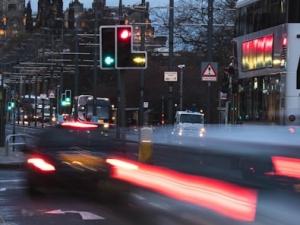The United Nations’ Working Party on Automated/Autonomous and Connected Vehicles (GRVA) has adopted the new regulation for Acceleration Control for Pedal Error (ACPE), and regulatory provisions for the introduction of a new generation of braking systems for electric vehicles.
The new UN regulation is expected to significantly improve road safety, while the regulatory provisions for the new braking systems in electric vehicles aim at improving energy efficiency.
Pedal misapplication more frequent among older drivers
Drivers sometimes press the acceleration pedal instead of the brake pedal by mistake, causing serious accidents. Relevant data from Asia and Europe suggest that older drivers tend to make this error more often than young drivers. For example, in Japan, they are 8 times more likely to make that mistake than other generations, leading Japan to propose a draft UN regulation to address this issue.
With population ageing affecting Europe, North America and most of Eastern and South-Eastern Asia, and estimates indicating that the number of people aged 65 years or older worldwide will more than double by 2050 the number of older drivers is also expected to rise. For example, in Japan, the number of driving license holders older than 75 is projected to increase from 4% in 2009 to 9.2% in 2025.
According to the United Nations, persons aged 65 years or above account for 30% of the overall population in Japan, 23% in Germany, 22% in France, 20% in Canada, 19% in the Republic of Korea, 18% in the United States, and 15% in China.
Given the suggested correlation between pedal misapplication and age, these figures imply a potentially increased risk of accidents in the future.
Another factor likely to contribute to this increased risk is the global rise in sales of vehicles with automatic transmission. Crash data from Japan and the United Kingdom reveal that such vehicles are more frequently associated with pedal misapplication cases. For example, in the United Kingdom, 7 out of 8 pedal misapplications with associated gear confusion are automatics.
The new UN regulation will therefore only apply to passenger cars with automatic transmission. Expected to enter into force in June 2025, the new regulation introduces a system designed to detect an object in front and rear of the vehicle and then prevent sudden acceleration.
New generation of braking systems for electric vehicles to boost energy efficiency
The continued growth of electric car sales, and estimates that it could reach 45% of the market share in China, 25% in Europe and 11% in the United States in 2024, has revealed a need to optimize the energy consumption necessary for them to brake.
Hydraulic systems, typically used in passenger cars, rely on the muscular energy of the driver for the basic braking function, but may use reserves of stored energy for advanced safety features. Braking systems using compressed air (trucks and buses), and the advanced functions of passenger cars, rely on the energy converted from fossil energy. However, in electric vehicles, it is not efficient to convert electrical energy from batteries to stored energy (pressurized fluids) and then apply the brakes.
A new braking technology, employing stored electrical energy for both the control transmission and the energy transmission, aims to be more energy efficient for electric vehicles and is seen as an important element to advance the transition from vehicles employing internal combustion engines to alternatives powered by electric energy.
The hydraulic and pneumatic braking systems currently regulated by UN Regulations No. 13 (heavy vehicle braking) and No. 13-H (light vehicle braking) have reached a high level of safety, reducing the risk of dangerous crashes, especially when it comes to heavy-duty vehicles and those transporting dangerous goods.
The UNECE Working Party on Automated/Autonomous and Connected Vehicles has reviewed potential layouts for the new braking system in both light-duty and heavy-duty vehicles, and it has defined relevant technical provisions to provide a comparable level of safety.
The new regulatory provisions will be adopted as amendments to UN Regulations No.13 and No.13_H. They are expected to enter into force in June 2025, while some manufacturers are anticipated to introduce new braking systems in compliance with the provisions already by end of 2025.
Note to editors
The UNECE World Forum for Harmonization of Vehicle Regulations (WP.29) is a unique worldwide regulatory forum hosted within the institutional framework of the UNECE Inland Transport Committee. Overall, the regulatory framework developed by the World Forum WP.29 allows the market introduction of innovative vehicle technologies, while continuously improving global vehicle safety, and vehicles’ environmental performance.
GRVA is the Working Party preparing draft regulations, guidance documents and interpretation documents for adoption by the parent body, WP.29. GRVA deals with safety provisions related to the dynamics of vehicles (braking, steering), Advanced Driver Assistance Systems, Automated Driving Systems and well as Cyber Security provisions.
GRVA meets three times a year, with around 160 experts present at each session. It gathers the decision makers (the representatives of Countries and REIOs – “the Contracting Parties”) as well as many stakeholders having a technical interest in the work of GRVA: the vehicle manufacturers (cars, trucks, buses etc.), the suppliers, the motorists, the test houses, the consumers representatives to name a few.


